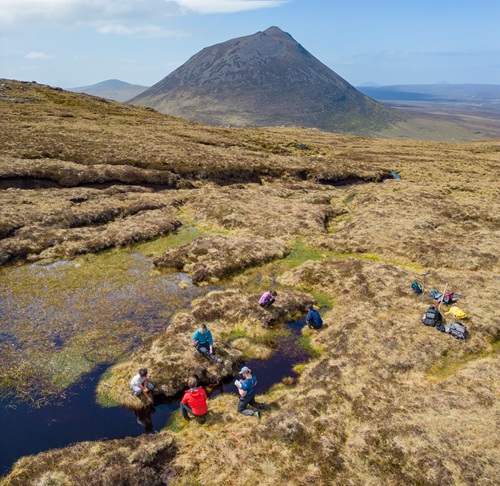Scotland leads the way in mapping peatland health with new satellite-based tools
Academics at the University of Nottingham and the University of the Highlands and Islands (UHI) are helping Scotland to break new ground in environmental monitoring with the launch of a powerful new method to assess the health of its peatlands—some of the country’s most important natural assets for climate, biodiversity, and water management.
In a major step forward, NatureScot has published a series of reports and open datasets showcasing how satellite radar and statistical machine learning are being used to monitor peatland condition across more than 680,000 hectares - over one-third of Scotland’s peatlands.
Developed by Professor David J. Large from the University of Nottingham and Professor Roxane Andersen from the University of the Highlands and Islands, and their respective teams, the method uses satellite radar (InSAR) to detect tiny vertical movements in the peatland surface. These subtle shifts are powerful indicators of the health of the peatland and how it’s changing over time.
Professor Andersen, based at the UHI Environmental Research Institute in Thurso, led on-the-ground validation of the tool, which involved the development of a new rapid assessment protocol - integrating elements of vegetation, hydrology and land use history – which was then used across hundreds of points in the Flow Country and in Cairnsmore.
She said: “This technology gives us a powerful, objective, field-tested and scalable way to monitor peatland health, supporting more effective restoration and smarter land management policies. Scotland is emerging as a global leader not only in the implementation of large-scale restoration intervention, but in the development of technological tools to monitor and protect one of its most ancient and valuable landscapes.”
This breakthrough is the result of more than 10 years of research and field validation.
By combining satellite data with on-the-ground observations from across Scotland, the team created a system that classifies peatland condition into three clear categories. It’s a scalable, science-backed approach that complements traditional ecological and hydrological surveys.
Peatlands are vital carbon sinks, storing more carbon than all the world’s forests combined. But when damaged, they can release that carbon back into the atmosphere. Monitoring their condition is essential for tackling climate change, protecting rare habitats, and supporting species like curlew, golden plover, and Sphagnum mosses that depend on healthy bogs.
With Scotland supporting the world’s only peatland UNESCO World Heritage Site in the Flow Country and investing heavily in peatland restoration—aiming to restore 250,000 hectares by 2030—this new capability offers a game-changing way to track progress, identify areas at risk, and guide future action.
The data is now publicly available via the NatureScot Map Portal, giving policymakers, land managers, researchers, and the public a powerful new window into the state of Scotland’s peatlands.
